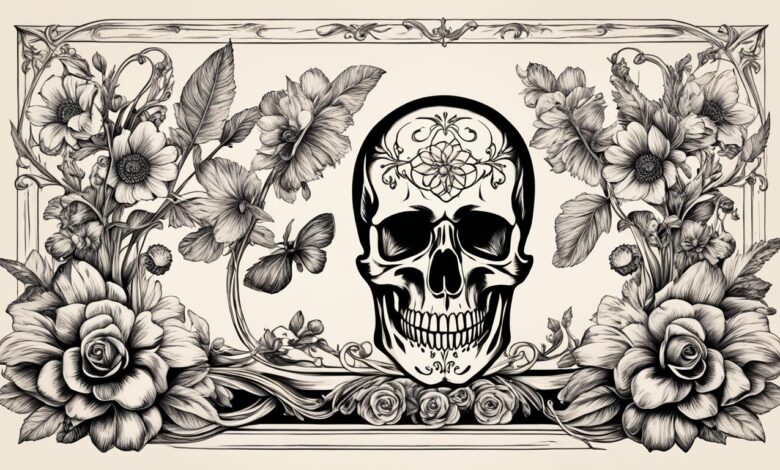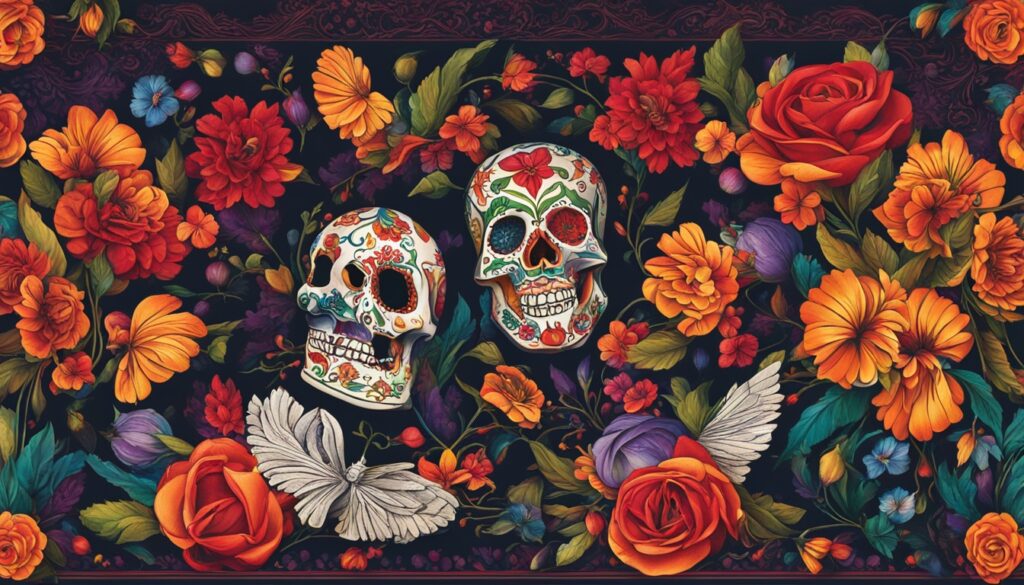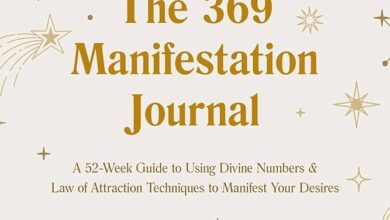Memento Vivere Memento Mori: Embrace Life & Death

Life is a delicate balance between savoring the present and facing our mortality. The Latin phrase “memento vivere memento mori” means “remember to live, remember you must die.” This powerful concept encourages us to embrace life’s beauty and fragility.
It inspires us to seize each day with purpose and gratitude. Throughout history, great minds have pondered this dual nature of human experience. They sought to understand how to live fully while accepting our inevitable end.
This philosophy offers profound insights into our existence. It can transform our outlook and lead us to self-discovery. By exploring “memento vivere memento mori,” we can find deeper meaning in our lives.
Key Takeaways
- Discover the meaning and origins of the “memento vivere memento mori” concept.
- Explore the Stoic philosophy and its teachings on contemplating mortality.
- Learn how to balance the embrace of life with the acceptance of death.
- Understand the importance of seizing the day and living each moment to the fullest.
- Explore cultural perspectives on death and their impact on our understanding of mortality.
Understanding the Latin Phrase “Memento Vivere Memento Mori”
“Memento vivere memento mori” is a powerful Latin phrase. It means “remember to live, remember you must die.” This saying has its roots in Stoic philosophy.
Meaning and Origin of the Phrase
“Memento mori” comes from medieval Christianity. It reminded people that life is short and death is certain. Stoics used this idea to encourage living a more meaningful life.
Stoic Philosophy and Meditations by Marcus Aurelius
Marcus Aurelius, a Roman emperor and Stoic philosopher, wrote about memento mori. He believed thinking about death could make life more valuable. Aurelius urged people to face death to live more fully.
“You could leave life right now. Let that determine what you do and say and think.” – Marcus Aurelius, Meditations
Stoics saw death as a reason to live in the present. They thought it could help people find purpose and strength. By accepting death, Stoics believed we could better appreciate life’s fleeting nature.
Memento Mori: Remembering Death
“Memento mori” means “remember that you will die.” This Latin phrase is central to Stoic philosophy. It encourages people to think about their mortality.
By doing so, they can live a more virtuous and fulfilling life. This practice helps people appreciate the present moment more deeply.
The Stoic Perspective on Contemplating Mortality
Stoics believed reflecting on death could help overcome fear and anxiety. It could also reduce attachment to material possessions. These were seen as barriers to living well.
Marcus Aurelius wrote in his Meditations, “You could leave life right now. Let that determine what you do and say and think.” This shows the Stoic focus on mindful living.
“Memento mori” serves as a reminder that our time on Earth is precious and limited, motivating us to make the most of it.
Embracing “memento mori” helps us understand what truly matters in life. It can lead to a more resilient and appreciative mindset. This outlook helps us face life’s challenges better.
“Memento mori” has been expressed in various art forms over centuries. These include medieval “danse macabre” and 17th-century Vanitas paintings. Such art reminds us of life’s fleeting nature.
These representations encourage us to live purposefully. They remind us to make the most of our limited time on Earth.
Memento Vivere: Remembering to Live
Life’s mortality can be overwhelming. But memento vivere, or “remembering to live,” balances this awareness with life celebration. It urges us to embrace each moment and find joy in the present.
Marcus Aurelius wrote, “The universe is change; our life is what our thoughts make it.” Our mindset can transform our living experience. By adopting a carpe diem attitude, we focus on life’s richness instead of death’s inevitability.
- Embrace life’s simple pleasures: a warm coffee, breathtaking sunset, or loved ones’ laughter. These moments can counter daily stresses and worries.
- Seek out new experiences and challenges. Try something novel or explore different perspectives. Growth often lies between the familiar and unfamiliar.
- Reflect on your core values and passions. What truly matters to you? Align your actions with the life you wish to lead.
“It is not death that a man should fear, but he should fear never beginning to live.” – Marcus Aurelius
As we navigate life’s journey, let’s pause and appreciate the present. By fully living each moment, we honor our existence and the legacy we leave behind.
The Duality of Life and Death
Life and death are intertwined in human existence. They shape our experiences and remind us of our finite time on earth. This duality impacts how we live our lives.
Finding Balance Between Embracing Life and Accepting Mortality
Stoic philosophers like Marcus Aurelius understood this balance. They practiced memento mori, or “remembering death,” to appreciate life’s fragility. This mindset cultivates gratitude and urgency to make the most of our time.
Christianity views eternal life as both future and present. It encourages living fully in Christ’s way, embodying truth and life. This perspective bridges the gap between mortality and eternity.
Art and literature often explore life and death themes. From skulls in memento mori to modern mortality commercialization, artists challenge our perceptions. They invite reflection on the delicate balance between living and accepting death.
“The entire process of life is, in fact, a journey towards death.” – Seneca, Stoic Philosopher
Harmonizing life and death unlocks a deeper understanding of human experience. It fosters appreciation for life’s preciousness and fragility. This mindful approach helps us live with intention and embrace our inevitable passing.
Carpe Diem: Seizing the Day
“Carpe diem,” meaning “seize the day,” inspires people to live life fully. This Latin phrase, from Roman poet Horace, stresses living in the moment. It has influenced culture, from poetry to modern sayings like “YOLO”.
The carpe diem philosophy recognizes life’s fleeting nature. It urges us not to waste precious moments. This idea challenges us to make our lives extraordinary.
It’s a call to step out of comfort zones. We should embrace new experiences and seize rare opportunities. This approach can lead to a more fulfilling life.
The concept of memento mori, “remember you are mortal,” often pairs with carpe diem. It reminds us of our limited time. This perspective adds urgency and purpose to our actions.
Combining these ideas creates a balanced outlook. It blends the joy of living in the moment with wisdom about life’s finite nature. This approach can lead to a more meaningful existence.
Carpe diem counters the trend of postponing dreams for future goals. It reminds us that we only control the present moment. By embracing it, we can create an extraordinary life.
Let’s answer the call of carpe diem. We can seize each day with renewed purpose. Appreciating life’s brevity may reveal the essence of life fulfillment.
Reframing Death: Cultural Perspectives
Different cultures view death and mortality in unique ways. Some approach it solemnly, while others celebrate the lives of those who’ve passed. Mexico’s Día de los Muertos offers a fresh take on life and death.
Día de los Muertos and Celebrating Life
Día de los Muertos is a centuries-old Mexican tradition. It blends indigenous Aztec rituals with Catholic influences. This celebration sees death as part of life’s cycle, not its end.
Families honor deceased loved ones with vibrant altars. These are adorned with marigolds, candles, and the deceased’s favorite items. The festival is a time of joyful remembrance, not mourning.
People believe the souls of the departed return during this time. They welcome them with open arms, music, dance, and laughter. This festival shows Mexico’s unique relationship with mortality.

This life celebration differs from Western cultures’ somber approach to death. It reframes death as a natural, celebratory part of life. Día de los Muertos encourages a deeper appreciation for the Día de los Muertos and life itself.
| Traditional Beliefs | Día de los Muertos Perspective |
|---|---|
| Death as a solemn, somber event | Death as a natural part of the cycle of life |
| Mourning and grief as the appropriate response | Joyful remembrance and celebration of loved ones |
| Separation between the living and the dead | Belief in the temporary return of the deceased |
Día de los Muertos emphasizes the link between life and death. It offers a meaningful way to engage with mortality. This cultural view reminds us that life can be celebrated, even in death’s presence.
Death as Rebirth and Personal Growth
The ancient idea of “memento mori” encourages us to remember death. It’s not morbid, but a chance for self-reinvention and deep change. This concept helps us see life and death as chances to grow.
Many cultures view death as a spark for rebirth. Ancient Egyptians weighed hearts against feathers for righteous rebirth. In Hinduism and Buddhism, karma shapes future lives based on our actions.
Buddhist teachings stress wisdom, compassion, and integrity for growth. These virtues plant seeds of good karma. They help us on a path of self-discovery and renewal.
“The noble idea in Buddhism to act well without attachment to the fruits of labor is highlighted, focusing on intentions and compassion as the main drivers of karma.”
Accepting life and death frees us from chasing endless youth. It lets us live truly and follow our passions. We can see birth, death, and rebirth as natural parts of life.
Seeing death as part of life helps us value the present more. It opens doors to daily growth. Memento mori invites us to shed old selves and find our true selves.
memento vivere memento mori: A Mindful Approach to Life
The ancient concept of memento vivere memento mori offers a path to mindfulness and life appreciation. It means “remember to live, remember to die.” This idea helps us connect deeply with the present moment.
Ancient Stoic philosophers like Seneca stressed the importance of reflecting on mortality. They believed it helped people live better lives. This view pushes us to focus on what truly matters.
Memento Mori medallions now serve as physical reminders of our journey. They’re inspired by Alcoholics Anonymous coins. These tokens help foster perseverance and self-awareness.
This mindset isn’t about feeling sad. It’s about appreciating the present moment fully. Practicing mindfulness can help us connect more deeply with life. It can also unlock our potential and help us find meaning.
“The one who puts the finishing touches on their life each day is never short of time.”
– Seneca

Memento vivere memento mori guides us through modern life’s complexities. It reminds us to live with intention and gratitude. This wisdom teaches us to respect life’s fragility and beauty.
Living with Chronic Conditions and Embracing Each Day
Chronic health challenges can be daunting. The philosophy “memento vivere memento mori” offers inspiration and resilience. It reminds us to live fully while acknowledging life’s fragility.
Personal stories show how this perspective empowers individuals. They find strength in making the most of each day.
Personal Stories and Experiences
Betty Reid Soskin, a 100-year-old park ranger, exemplifies this mindset. Despite age-related limitations, she remains committed to her work. She values the present and her lasting impact.
Jared, living with hemophilia B and epilepsy, challenges traditional masculinity norms. He embraces a fluid approach to gender roles. Jared excels in domestic tasks and chooses safe hobbies.
His marriage demonstrates the power of teamwork and personal growth. They prioritize individual strengths over conventional gender expectations.
“Facing chronic conditions has taught me to cherish each moment and find joy in the small things. It’s not about what I can’t do, but what I can do to make the most of my life.”
These stories show how “memento vivere memento mori” guides those with chronic conditions. It helps them navigate life with illness and embrace each day.
This philosophy fosters renewed purpose and resilience. It encourages people to live fully despite health challenges.
Conclusion
“Memento vivere memento mori” explores the balance between life and death. This concept leads to a more meaningful existence. Philosophers have long pondered this delicate dance between mortality and living in the present.
Literature reflects an even balance between “Memento Mori” and “Memento Vivere”. This shows how humans grapple with life’s finite nature. The combined phrase appears often in poetry, prose, and philosophical works.
Adopting this life philosophy can lead to a more mindful existence. It helps us appreciate life’s preciousness and fragility. This awareness can spark personal growth and deeper connections to the present.
Physical reminders and debiasing techniques can help embrace this concept. Stoic wisdom also offers guidance in this area. By doing so, we can set meaningful goals and live with intention.
Let’s strive to embody this timeless concept in our daily lives. We can live each day with gratitude and awareness. This approach helps us recognize the beauty that surrounds us.
FAQ
What is the meaning and origin of the Latin phrase “memento vivere memento mori”?
“Memento vivere memento mori” means “remember to live, remember you must die.” This idea comes from Stoic philosophy. Marcus Aurelius, a Roman emperor and Stoic philosopher, wrote about it.
How did the Stoics view the importance of contemplating mortality?
Stoics thought about death often to live better lives. They believed this practice helped face fears about dying. It led to a more mindful and grateful way of living.
What is the importance of “memento vivere” or remembering to live?
“Memento vivere” balances death awareness with celebrating life. It urges us to enjoy each moment and seek new chances. This concept helps find joy, even when life gets tough.
How can the duality of life and death lead to a more profound understanding of the human experience?
Life and death’s interplay deepens our grasp of human experience. It shows how fragile and precious life is. Balancing life enjoyment and death acceptance can change our outlook.
What is the significance of the concept of “carpe diem” or seizing the day?
“Carpe diem” means living each moment fully. It’s about making the most of your time. This idea pushes us to try new things and find joy now.
How do different cultures reframe the concept of death and mortality?
Mexico’s Día de los Muertos celebrates lives of those who’ve died. It offers a positive view of mortality. This approach can deepen our appreciation for life’s cycles.
How can the concept of death as a form of rebirth and personal growth be transformative?
Life and death cycles help us shed old versions of ourselves. This allows for personal reinvention and self-discovery. Embracing this idea can lead to a more fulfilling life journey.
How can a “memento vivere memento mori” mindset lead to a more mindful and appreciative approach to life?
Recognizing life’s fragility while embracing it deepens our connection to now. It creates a greater sense of purpose and gratitude. This approach can inspire a more mindful way of living.
How can individuals living with chronic health conditions benefit from the “memento vivere memento mori” philosophy?
This philosophy can inspire those with chronic conditions to embrace each day. Personal stories show how facing mortality leads to renewed life appreciation. It can help people commit to making the most of their present.




